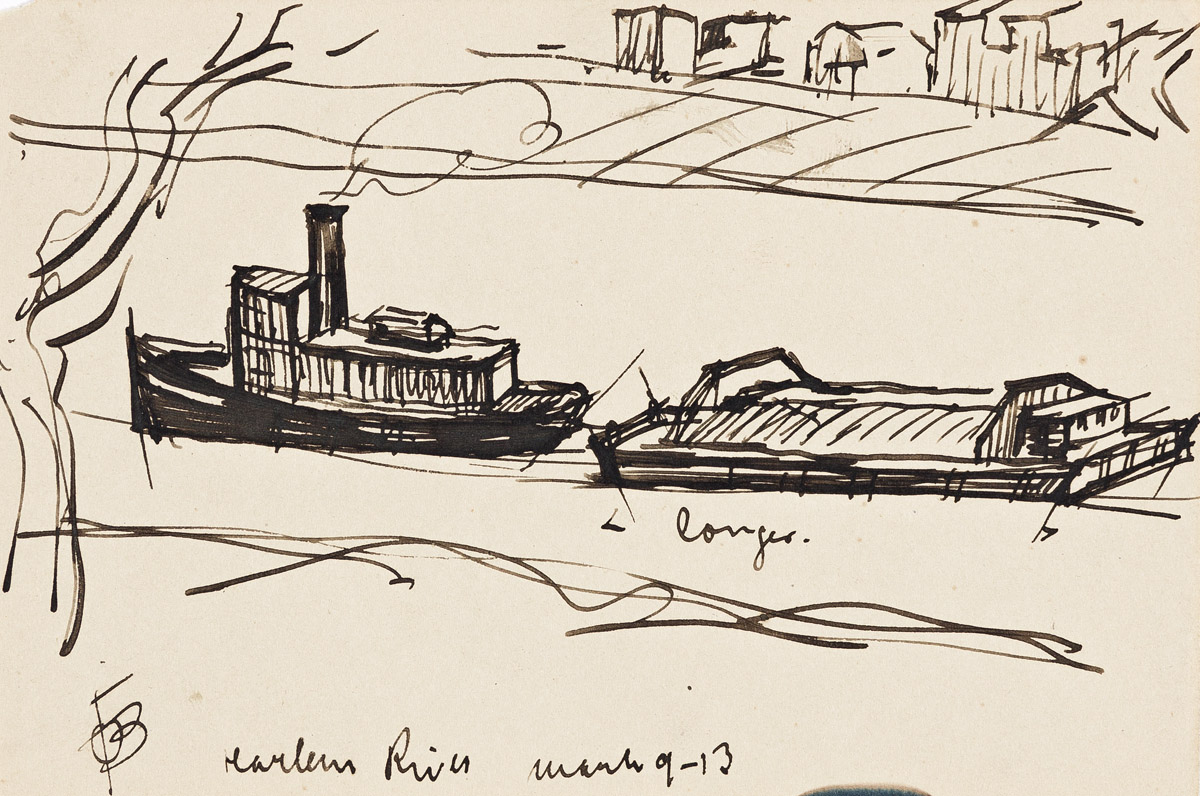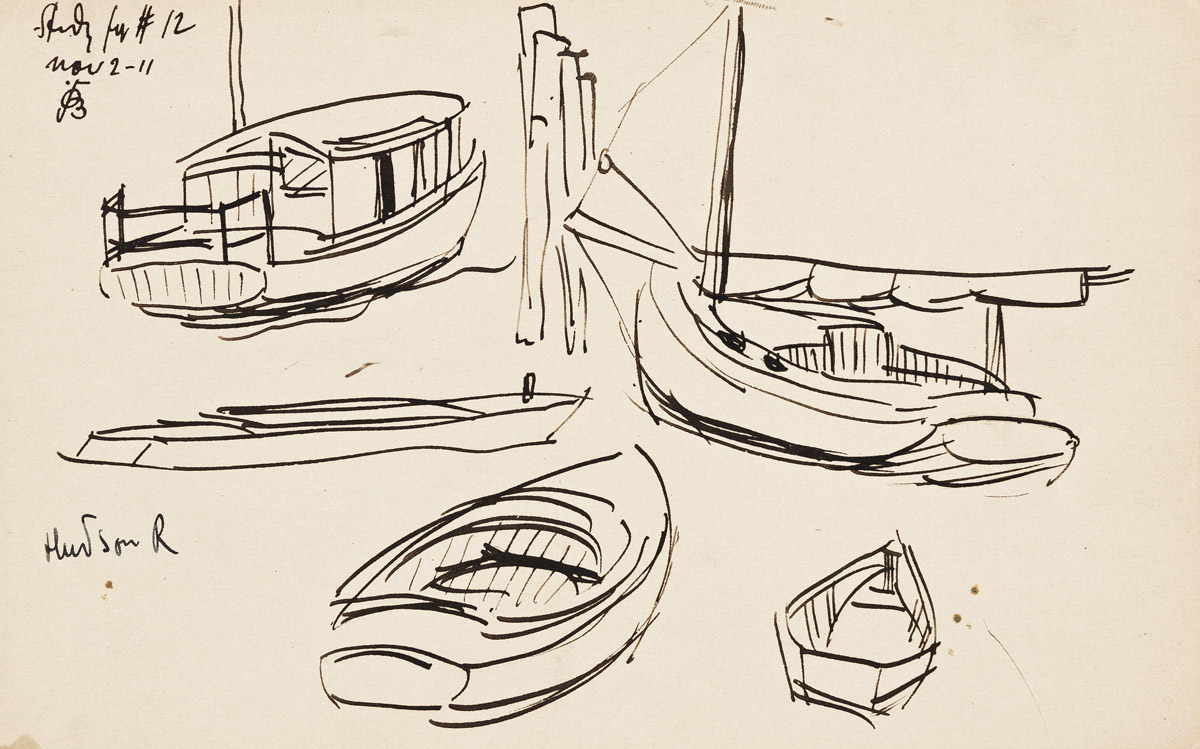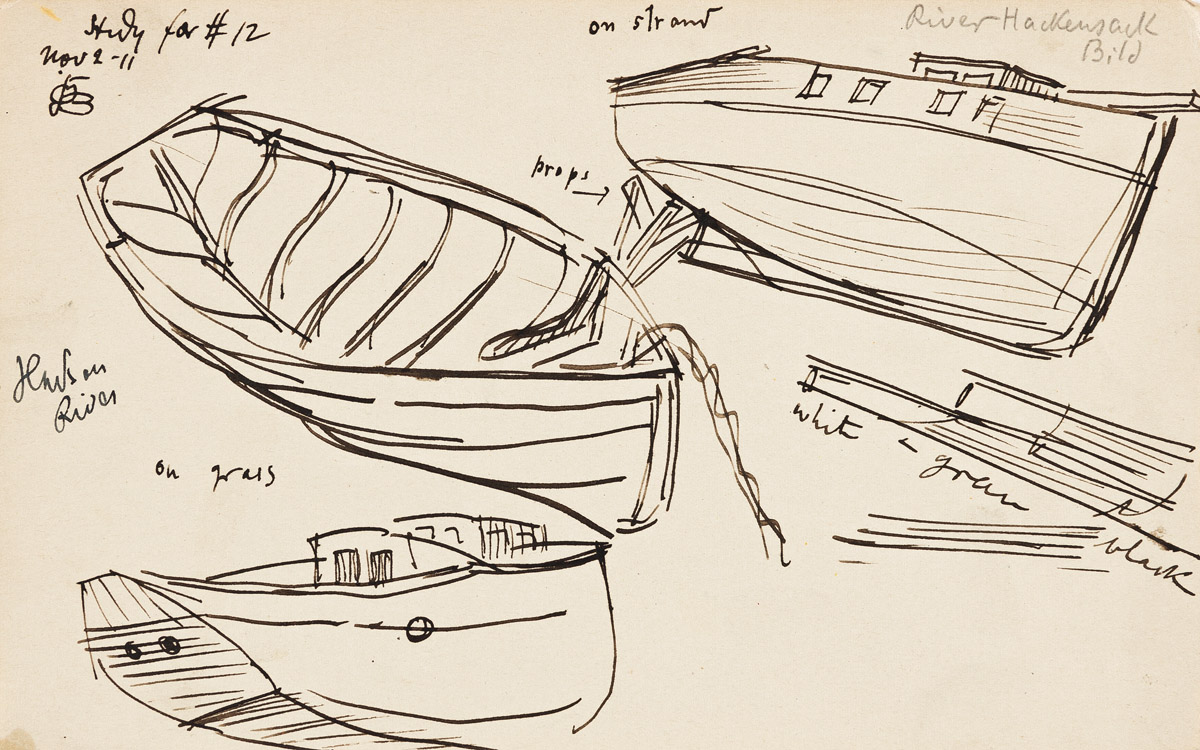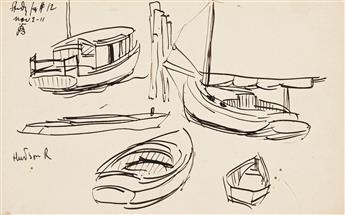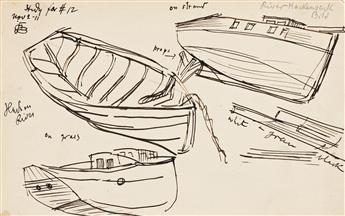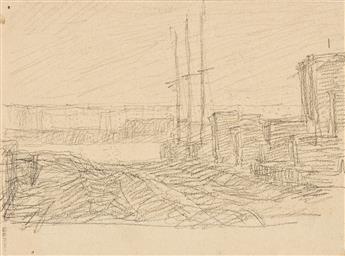Sale 2614 - Lot 60
Price Realized: $ 550
Price Realized: $ 688
?Final Price Realized includes Buyer’s Premium added to Hammer Price
Estimate: $ 1,000 - $ 1,500
OSCAR BLUEMNER
Group of 4 marine drawings.
West Harlem River at Mott Haven, pencil on cream wove paper. Annotated in pencil, verso * Study for #12, Boats on Hudson River I, brown pen and ink on smooth cream wove paper, 1911. Signed with the artist's monogram, dated and titled in ink, upper left recto, and inscribed "River Hackensack Bild" in pencil, upper right recto * Study for #12, Boats on Hudson River II, pen and ink on smooth cream wove paper, 1911. Signed with the artist's monogram, dated and titled in ink, upper left recto * Harlem River, pen and ink on smooth cream wove paper, 1913. Signed with the artist's monogram, titled and dated in ink, lower recto. Various sizes and conditions.
Provenance: Private collection, New Hampshire.
Bluemner (1867-1938), one America's finest Modernist colorists, was overlooked for the majority of his career. Now however his place alongside Georgia O'Keeffe, John Marin, Marsden Hartley and Max Weber--all fellow exhibitors at Alfred Stieglitz's "291" Gallery in New York--is understood and he ranks among the group of most modern and influential artists in America during the early 20th century.
Developing a friendship with Stieglitz around 1911, and after a drawn-out litigation to rightfully claim his recognition and compensation for designing the Bronx, New York courthouse, Bluemner decided to turn completely to painting in 1912 and embarked on a seven month European voyage. Upon his return, after exposure to works by Paul Cézanne, Vincent van Gogh, as well as the Fauves and Cubists, Bluemner's work reflected a dramatic shift toward the bright, streamlined style that would define his work and parallel the developments made by other American modern artists during the early 20th century. Like Edward Hopper, Bluemner traveled widely along the east coast, in the countryside surrounding New York, and made numerous watercolor studies of landscapes and buildings, virtually all of which are devoid of human presence.
Group of 4 marine drawings.
West Harlem River at Mott Haven, pencil on cream wove paper. Annotated in pencil, verso * Study for #12, Boats on Hudson River I, brown pen and ink on smooth cream wove paper, 1911. Signed with the artist's monogram, dated and titled in ink, upper left recto, and inscribed "River Hackensack Bild" in pencil, upper right recto * Study for #12, Boats on Hudson River II, pen and ink on smooth cream wove paper, 1911. Signed with the artist's monogram, dated and titled in ink, upper left recto * Harlem River, pen and ink on smooth cream wove paper, 1913. Signed with the artist's monogram, titled and dated in ink, lower recto. Various sizes and conditions.
Provenance: Private collection, New Hampshire.
Bluemner (1867-1938), one America's finest Modernist colorists, was overlooked for the majority of his career. Now however his place alongside Georgia O'Keeffe, John Marin, Marsden Hartley and Max Weber--all fellow exhibitors at Alfred Stieglitz's "291" Gallery in New York--is understood and he ranks among the group of most modern and influential artists in America during the early 20th century.
Developing a friendship with Stieglitz around 1911, and after a drawn-out litigation to rightfully claim his recognition and compensation for designing the Bronx, New York courthouse, Bluemner decided to turn completely to painting in 1912 and embarked on a seven month European voyage. Upon his return, after exposure to works by Paul Cézanne, Vincent van Gogh, as well as the Fauves and Cubists, Bluemner's work reflected a dramatic shift toward the bright, streamlined style that would define his work and parallel the developments made by other American modern artists during the early 20th century. Like Edward Hopper, Bluemner traveled widely along the east coast, in the countryside surrounding New York, and made numerous watercolor studies of landscapes and buildings, virtually all of which are devoid of human presence.
Exhibition Hours
Exhibition Hours
Aliquam vulputate ornare congue. Vestibulum maximus, libero in placerat faucibus, risus nisl molestie massa, ut maximus metus lectus vel lorem.



